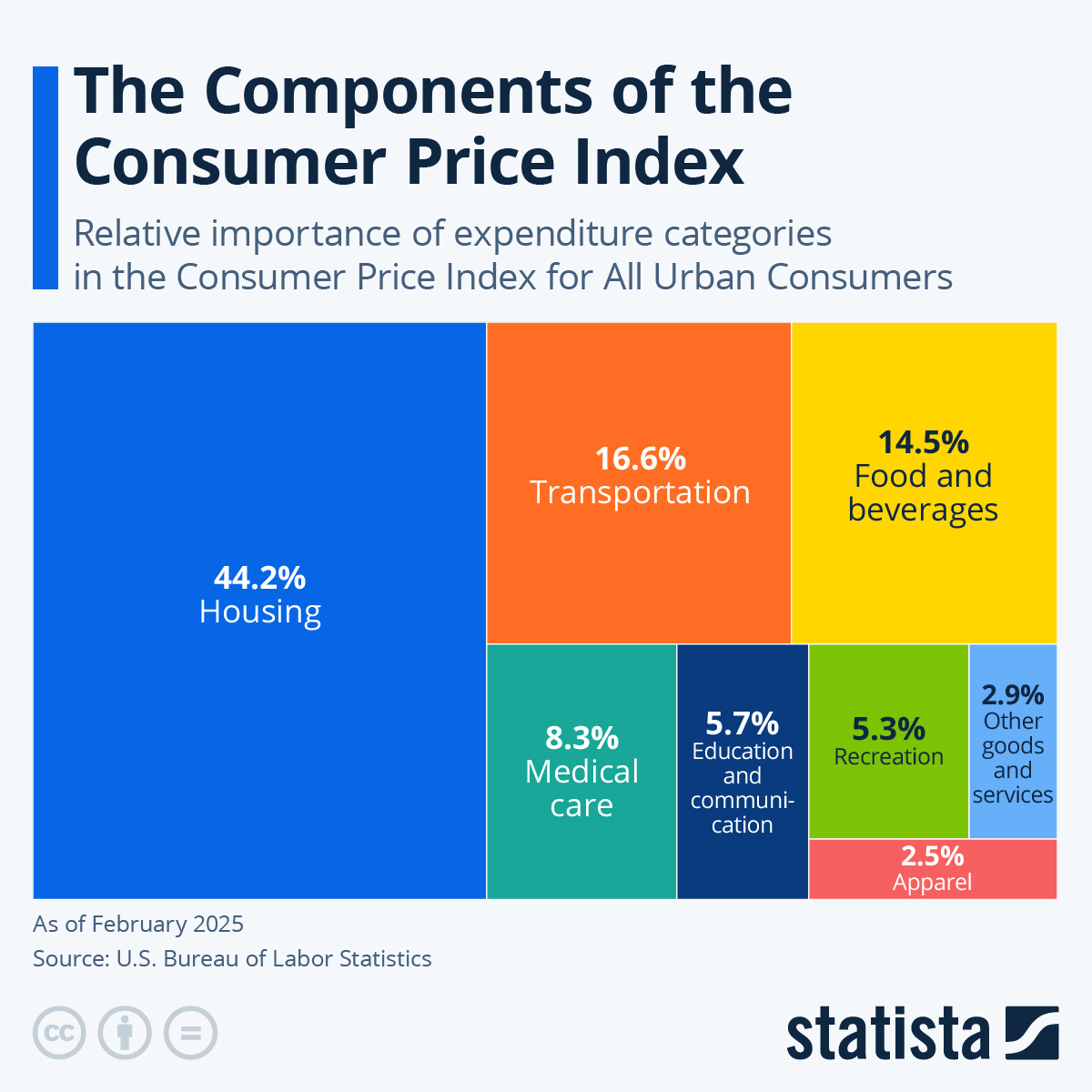The Consumer Price Index for All Urban Consumers (CPI-U) is a complex construct based on the collection of about 94,000 prices and 8,000 rental housing units quotes each month. As the the most cited inflation gauge in the United States, the CPI-U is designed to measure the changes in prices of all goods and services purchased for consumption by urban households, representing over 90 percent of the U.S. population. Different expenditure items are classified into more than 200 categories, arranged into eight major groups and weighted based on their actual share of consumption expenditure. That means increases in rent or food prices will have a larger impact on the overall CPI than price increases in smaller spending categories, such as apparel.
The eight main expenditure groups are food and beverages, housing, apparel, transportation, medical care, recreation, education and communication and other goods and services. With a relative importance of 44.6 percent, housing, which includes rent and homeowners’ rent equivalent but also utilities or bedroom furniture) is by far the largest expenditure category in the CPI-U, followed by transportation (e.g. new and used vehicles, gasoline and airline fares) and food and beverages (self-explanatory really). Together, these three categories accounted for more than 75 percent of the CPI-U in September 2023, explaining why increases in costs of shelter, gasoline or food prices have a major impact on overall inflation.




















